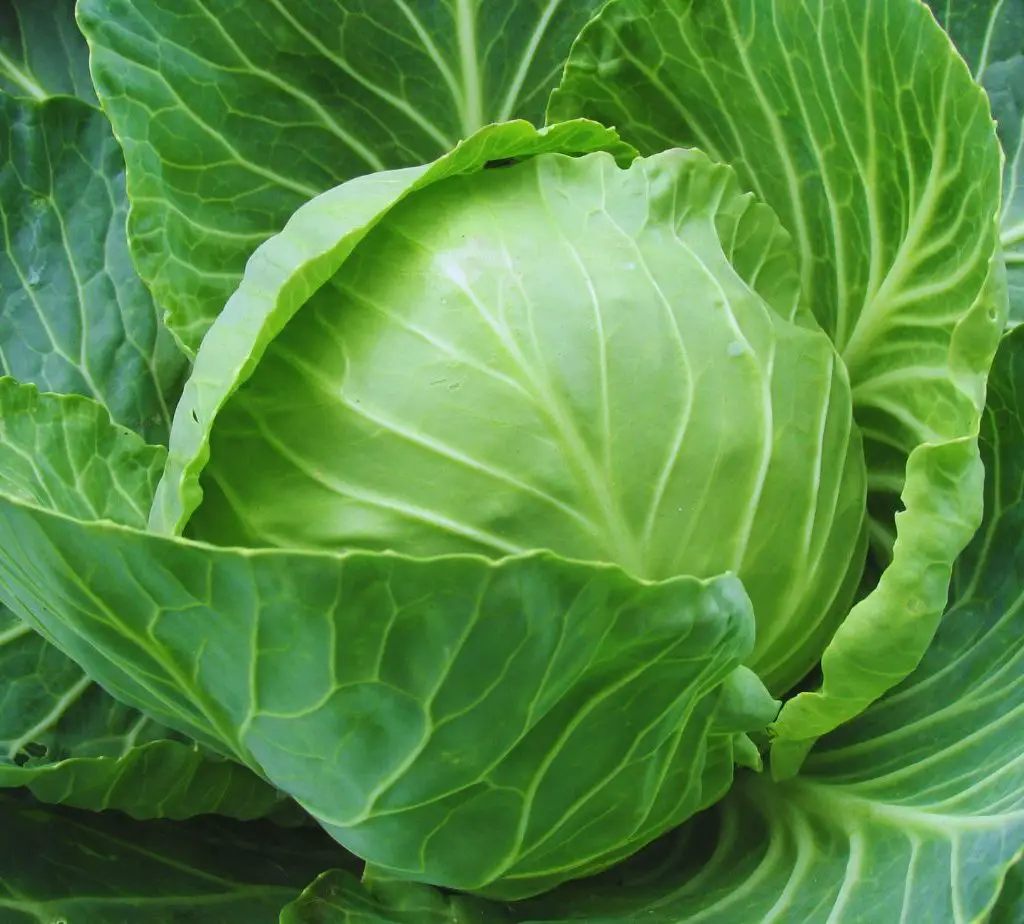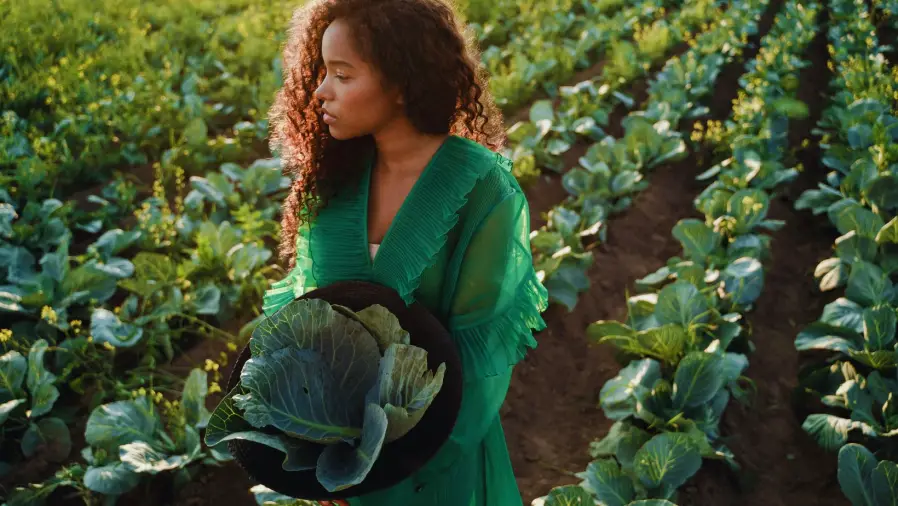Introduction
Have you ever gazed in awe at those colossal cabbages displayed at the local farmer’s market and wondered about the secrets behind their impressive size? The time has come to demystify the process! In this comprehensive guide, we will divulge the tips and techniques for growing gigantic cabbages right in your backyard. Whether you’re a seasoned gardening expert or just embarking on this green journey, we guarantee that our insights will not only be informative but also enjoyable to implement.

Opt for the Right Cabbage Variety
Choosing the Perfect Cabbage Variety
Let’s embark on our journey to colossal cabbages by addressing the first crucial step: selecting the ideal cabbage variety. Think of it as choosing the right tool for a specific task. Certain cabbage types naturally have the potential to grow larger than others. Consider opting for varieties like “Mammoth Red Rock” or “Goliath” cabbages, renowned for their ability to reach impressive sizes.
Table of Contents
- Introduction
- Opt for the Right Cabbage Variety
- Prepare Your Soil
- Find the Ideal Location
- Planting and Spacing
- Watering and Mulching
- Pest Control and Disease Prevention
- Fertilization
- Harvesting Tips
- Conclusion
- FAQs
Prepare Your Soil
Lay the Groundwork with Proper Soil Preparation
Now, let’s delve into the soil – the very foundation of healthy and robust cabbages. Envision your soil as a cozy haven for your cabbages. To create an inviting environment, enrich your soil with organic matter and compost. This is akin to adding plush pillows and cozy blankets to ensure your cabbage’s comfort.
If you’re uncertain about your soil’s needs, consider conducting a soil test. This serves as a health check-up for your garden, revealing the nutrients lacking and enabling you to provide precisely what your cabbages require.
Find the Ideal Location
Choose the Perfect Sunbathing Spot
Cabbages are akin to sun enthusiasts, craving ample sunlight. Picture your cabbage as a sunbather luxuriating in the sun’s warmth. Select a location in your backyard where your cabbages can bask in at least six hours of direct sunlight daily.
Planting and Spacing
Planting Depth Matters
When the time comes to plant your cabbage seeds or seedlings, pay heed to the planting depth. Think of it as tucking them into bed snugly. Plant them in such a way that the soil covers their roots and reaches up to their first set of leaves. This promotes strong root development, much like a sturdy foundation for a house.
Provide Adequate Spacing
Cabbages require personal space to stretch and flourish. Visualize them as graceful dancers on a stage, necessitating room to twirl and pirouette. Plant them approximately 18 to 24 inches apart. This allows them to grow without feeling crowded, ensuring their leaves can unfurl freely without encroaching on their neighbors.
Watering and Mulching
Maintain Soil Moisture
Let’s discuss hydration. Just like you on a scorching day, cabbages need to stay well-hydrated. Ensure consistent watering, keeping the soil consistently moist but not waterlogged. Think of it as offering your cabbages a refreshing drink on a warm day. Inconsistent watering can result in stunted growth and smaller cabbages, so make it a habit to monitor their moisture needs regularly.
Harness the Power of Mulching
To assist your cabbages in staying cool and adequately hydrated, contemplate mulching. Imagine mulch as a protective sun hat and sunscreen for your cabbages. Scatter organic mulch, such as straw or leaves, around them. This aids in retaining moisture in the soil and maintaining an optimal temperature, creating a comfortable environment for your plants.
Pest Control and Disease Prevention
Vigilance Against Pests
Now, let’s address the potential pests that might disrupt your cabbage’s tranquility. Visualize them as unwelcome intruders crashing a picnic. Common cabbage adversaries include aphids, cabbage worms, and slugs. Keep a vigilant eye out for these intruders and take prompt action when necessary. Consider introducing beneficial insects or using neem oil as a natural means to deter these unwanted guests.
Preventing Diseases
Disease prevention is akin to taking vitamins to maintain good health. Cabbages can fall prey to ailments like clubroot and downy mildew. To shield your cabbages from these threats, practice crop rotation. Think of it as altering your daily routine to stay in top form. Maintain a tidy garden environment, and refrain from overhead watering, which can encourage fungal growth.
Fertilization
Nourishing Your Cabbages
Let’s turn our attention to nourishing your cabbages, akin to serving them a delectable meal. Cabbages are voracious eaters, especially in their early stages. Utilize a balanced fertilizer with a higher nitrogen content to stimulate lush and leafy growth. It’s the equivalent of serving them their favorite salad to munch on.
Harvesting Tips
Timing is Crucial
The moment of truth arrives when it’s time to reap the rewards of your labor. Visualize it as selecting the ripest apple from a tree. Harvest your cabbages when they feel firm and have attained their full size, typically occurring around 75-90 days after planting.
Harvesting Technique
When it’s time to pluck your cabbages, employ a sharp knife to cut them from the stem. Leave a few outer leaves attached; this is akin to packing them in a protective lunchbox. This approach preserves the freshness of the cabbage for an extended period and prevents damage.
Conclusion
Cultivating gargantuan cabbages in your backyard is no longer an elusive dream. With the right cabbage variety, diligent soil preparation, attentive care, and these user-friendly tips, you’ll soon be astounded by the size of your cabbage harvest. Roll up your sleeves, don your gardening gloves, and witness your cabbages thrive!

FAQs
When should I plant cabbage in my backyard?
Cabbage is typically planted in early spring for a summer harvest or in late summer for a fall harvest.
How can I naturally protect my cabbages from pests?
You can employ natural methods such as introducing ladybugs or utilizing row covers to deter pests.
What should I do with surplus cabbages that I can’t use all at once?
Store them in a cool, dark place or explore preservation methods like fermentation or pickling.
Can I grow colossal cabbages in containers on my balcony?
While possible, it’s more challenging due to space limitations. Cabbages thrive best when planted in the ground.
Are there specific companion plants that enhance cabbage growth?
Yes, consider planting onions and marigolds nearby, as they can help deter pests and promote cabbage growth.
With these comprehensive explanations and gardening insights, you’ll soon be cultivating enormous cabbages that will turn your backyard into the envy of the neighborhood. Happy gardening!
( To know more about vegetables gardening hacks : https://bonsainurserybd.com/10-game-changing-vegetable-gardening/ )
